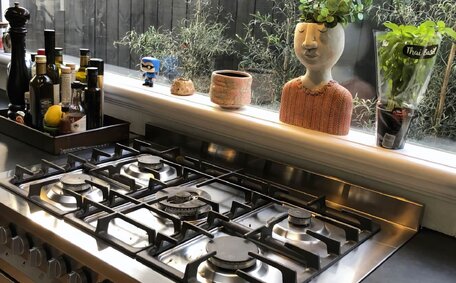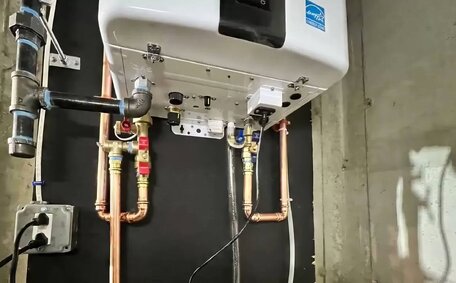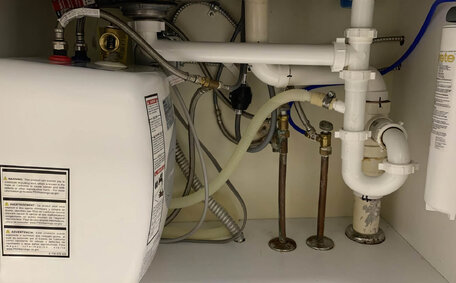Introduction to Plumbing Layouts and Drainage Systems
A plumbing layout refers to the design and positioning of the pipes, drains, vents and fixtures because an inefficient system can seriously compromise how well a building’s drain can function.
This includes deciding on the locations of toilets, sinks, showers, hot water systems and other water-using appliances. It also encompasses mapping out wastewater pipes and vents to properly carry wastewater out of the building.
An efficient plumbing system layout is essential in preventing clogged drains, ensuring wastewater flows smoothly out of your home or business. If your plumbing system layout causes congestion or a drain blocked, this can lead to backups and flooding. Key problem areas include undersized drain pipes, pipes with too many bends, or fixtures grouped too closely together, which can affect your home’s plumbing performance.
When planning a plumbing layout, both drainage and water supply are critical points of consideration, as neglect can seriously undermine the system’s efficiency.
The drainage system must have adequate slope and venting to prevent clogs. The drainage system must have adequate slope and venting to prevent clogs. The drainage system must have adequate slope and venting to prevent clogs.
How Plumbing Layout Factors Can Lead to Blocked Drains
There are several aspects of plumbing layouts that can contribute to drain blockages if not designed properly:
Poor Drainage Slope
Your home’s pipes need an adequate downward slope to allow your drain to flow out efficiently. Make sure the slope requirements are met to ensure your wastewater flows efficiently in the main sewage drain, typically 1/4 inch per foot, depending on pipe size. If the slope of the blocked sewer line is too flat, stagnating wastewater can cause a clog as it accumulates solids.
Undersized Pipes
Using pipes that are too narrow can also become the most common causes for sewer drains to get quickly clogged and are among the most obvious culprits for blockages. During heavy rain, Strathfield’s clay pipes or undersized drain lines can be overwhelmed, necessitating a thorough clean out to restore water flow and prevent blocked drains. The kitchen sink, which often handles cooking oil, fats, oils, and food scraps, also discharges a high volume, explaining why it’s crucial to have at least 2-inch to 3-inch pipes.
Excessive Bends and Joints
Having too many tight bends in your drainage pipes causes blocked areas where debris can snag and accumulate. The more joints a system has, the more likely gaps and offsets will cause materials to restrict water down your pipe, slowing the flow through your system. A quality plumbing layout minimises bends and joints wherever feasible.
Grouped Plumbing Fixtures
Clustering multiple fixtures such as sinks, toilets, and the tub shower combination too closely can, in most cases, overload localised pipe sections. For example, linking several bathroom groups, including the tub, shower, and basin into one small main drain may exceed its capacity. Staggering fixtures like tubs, showers, and the washing machine evenly helps to prevent drain clogs by ensuring wastewater flows smoothly.
Invasive Tree Roots
The River Red Gum and other invasive trees around your Strathfield property are notorious for penetrating the outside drain seeking moisture, often requiring a water jetter to clear the stubborn roots. Over time, aggressive root systems can serious infiltrate aging your sewer lines, which can damage your seamless functioning of your drain system. Preventive pipe relining can ensure your sewer line is guarded against root intrusion that leads to obstructions.
Our team is dedicated to careful planning, which is paramount to creating plumbing designs that bypass common mishaps, ensuring smooth and efficient water flow. Our team has the expertise to assess layouts and clear blocked areas contributing to chronic issues down your drains.
Identifying Signs of Layout-Related Drain Issues
There are several signs blocked drain that may indicate drainage problems stemming from poor plumbing layouts in your Strathfield home or business:
Slow-Draining Fixtures
If sinks, tubs, and showers are draining sluggishly, often due to an accumulation of hair, soap scum, and other residues, this could be a tell-tale sign of a blocked drain. Solids can accumulate inside your drains in areas with inadequate slope or too many tight bends, leading to a clogged drain. Tree roots may also cause blockage by constricting sewer drain pipe lines.
Gurgling Noises
Bubbling or gurgling sounds coming your way from the drains, coupled with the stench of raw sewage, point to venting issues. Vents allow air into the system so wastewater and clean water can flow freely. Improper vent placement due to layout flaws allows sewer gases to back up, tainting the water your fixtures use.
Overflowing Fixtures
When drains are completely blocked, water can back up into your toilet or out of the lowest fixtures. Bathtubs and basement sinks are common overflow points. To prevent future issues, it’s important not to flush anything down that might worsen blockages, especially considering tree root intrusion can be a major culprit after heavy rainfall.
Multiple Affected Fixtures
If more than one plumbing fixture in your homes exhibits signs of a blocked drain can regularly point to issues, this could signify problems with older pipes sharing drainage lines. Sections of under capacity pipework or invasive roots damaging pipes may require repair.
While you might think 'What can I do?', remember that temporary home remedies can offer relief, but chronic plumbing problems like drain blockages that challenge your system due to layout problems warrant the expertise of your plumber. Our licensed plumber can do a thorough inspection with a drain camera to find out trouble spots and determine appropriate solutions.
When to Call a Professional Plumber
Engaging a quality plumbing service is advised when persistent signs blocked layout with the sewer line in your Strathfield property. Signs like regularly slow drains or gurgling sounds likely indicate sections of pipework needing assessment or modification.
Upgrading undersized or ageing drainage lines requires technical know-how to sustain optimal water pressure and meet current demands. Similarly, adjusting vent placement or fixture groupings to improve flow through each drain pipe involves understanding complex plumbing codes. Our licenced experts can help identify and address layout factors contributing to chronic blockages before they become major issues.
For suspected root intrusions or wet wipes and toilet paper buildups down toilet lines, we can engage highpressure water techniques to break down the obstructions alongside high-tech cameras to thoroughly inspect drains and address damage. We then recommend trenchless pipe relining as the long-term solution, safeguarding the integrity of your property without major disruption. These upgrades are intricate processes best left to seasoned professionals, saving you both time money in the long run.
While DIY drain cleaning with home solutions like baking soda and boiling water provides temporary relief, reliance on caustic cleaners and failure to address underlying issues could lead to costly repairs. For persistent clogs, you can try methods such as an electric eel or a drain snake to clear your blocked pipes, reducing the risk of overflow flooding and water damage if resolved correctly. Don’t hesitate to address your plumbing today; if you notice reoccurring blockage patterns - please call us, we’re ready to help get your plumbing layout working optimally.
To discuss your specific drainage issues and preventative layout solutions, email jobs@strathfieldplumbingservices.com.au, call 1300 349 338, or book an appointment online. Our friendly experts are your local go-to for layout-related plumbing advice and repairs.






